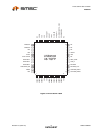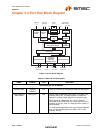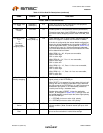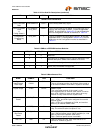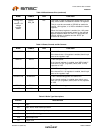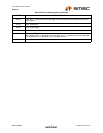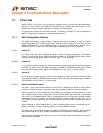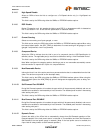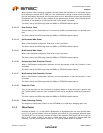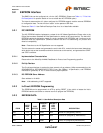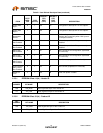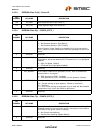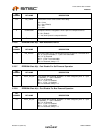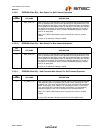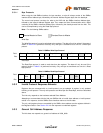
2-Port USB 2.0 Hub Controller
Datasheet
Revision 2.3 (08-27-07) 18 SMSC USB2502
DATASHEET
When Dynamic Power switching is enabled, the Hub detects the availability of a local power source
by monitoring the external SELF_PWR pin. If the Hub detects a change in power source availability,
the Hub immediately disconnects and removes power from all downstream devices and disconnects
the upstream port. The Hub will then re-attach to the upstream port as either a Bus-Powered Hub (if
local-power in unavailable) or a Self-Powered Hub (if local power is available).
This field is set by the OEM using either the SMBus or EEPROM interface options.
5.1.1.13 Over-Current Timer
The time delay (in 2ms increments) for an over-current condition to persist before it is reported to the
Host.
This field is set by the OEM using either the SMBus or EEPROM interface options.
5.1.1.14 Self-Powered Max Power
When in Self-Powered configuration, Sets value in 2mA increments.
This field is set by the OEM using either the SMBus or EEPROM interface options.
5.1.1.15 Bus-Powered Max Power
When in Bus-Powered configuration, Sets value in 2mA increments.
This field is set by the OEM using either the SMBus or EEPROM interface options.
5.1.1.16 Self-powered Hub Controller Current
When in Self-Powered configuration, Maximum current requirements of the Hub Controller in 2mA
increments.
This field is set by the OEM using either the SMBus or EEPROM interface options.
5.1.1.17 Bus-Powered Hub Controller Current
When in Bus-Powered configuration, Maximum current requirements of the Hub Controller in 2mA
increments.
This field is set by the OEM using either the SMBus or EEPROM interface options.
5.1.1.18 Power-On Timer
Time (in 2ms intervals) from the time power-on sequence begins on a port until power is good on that
port. System software uses this value to determine how long to wait before accessing a powered-on
port.
This field is set by the OEM using either the SMBus or EEPROM interface options.
5.1.1.19 Power Switching Polarity
The selection of active state “polarity” for the PRTPWR2 pin is made by a strapping option only.
5.1.2 VBus Detect
According to Section 7.2.1 of the USB 2.0 Specification, a downstream port can never provide power
to its D+ or D- pull-up resistors unless the upstream port’s VBUS is in the asserted (powered) state.
The VBUS_DET pin on the Hub monitors the state of the upstream VBUS signal and will not pull-up
the D+ or D- resistor if VBUS is not active. If VBUS goes from an active to an inactive state (Not
Powered), Hub will remove power from the D+ or D- pull-up resistor within 10 seconds.



